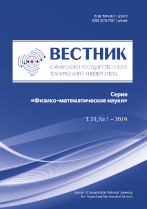|
This article is cited in 1 scientific paper (total in 1 paper)
Mathematical Modeling, Numerical Methods and Software Complexes
A divergence-free method of collocations and least squares for the computation of incompressible fluid flows and its efficient implementation
E. V. Vorozhtsova, V. P. Shapeevab
a Khristianovich Institute of Theoretical and Applied Mechanics, Siberian Branch of the Russian Academy of Sciences, Novosibirsk, 630090, Russian Federation
b Novosibirsk National Research University, Novosibirsk, 630090, Russian Federation
(published under the terms of the Creative Commons Attribution 4.0 International License)
Abstract:
The problem of the acceleration of the iterative process of numerical solution by the collocation and least squares (CLS) method of boundary value problems for partial differential equations is considered. For its solution, it is proposed to apply simultaneously three ways to accelerate the iterative process: preconditioner, multigrid algorithm, and Krylov method. A method for finding the optimal values of the parameters of the two-parameter preconditioner is proposed. The use of the found preconditioner significantly accelerates the iterative process. The influence on the iterative process of all three ways of its acceleration is investigated: each separately, and also at their combined application. The application of the algorithm using Krylov subspaces gives the greatest contribution. The combined use of all three ways to speed up the iteration process of solving boundary value problems for two-dimensional Navier-Stokes equations has reduced the CPU time up to 362 times as compared with the case when only one of them, the preconditioner, was applied.
Keywords:
preconditioning, Krylov subspaces, multigrid algorithms, Navier–Stokes equations, the method of collocations and least squares.
Received: November 25, 2019
Revised: July 29, 2020
Accepted: August 24, 2020
First online: September 21, 2020
Citation:
E. V. Vorozhtsov, V. P. Shapeev, “A divergence-free method of collocations and least squares for the computation of incompressible fluid flows and its efficient implementation”, Vestn. Samar. Gos. Tekhn. Univ., Ser. Fiz.-Mat. Nauki [J. Samara State Tech. Univ., Ser. Phys. Math. Sci.], 24:3 (2020), 542–573
Linking options:
https://www.mathnet.ru/eng/vsgtu1758 https://www.mathnet.ru/eng/vsgtu/v224/i3/p542
|

|



 Contact us:
Contact us: Terms of Use
Terms of Use
 Registration to the website
Registration to the website Logotypes
Logotypes